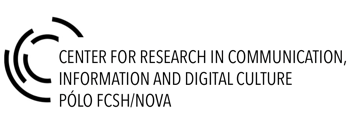In recent times, the social perception of many relevant events has been deeply affected by the wide circulation of pictures. Migrations, global terrorism, international leadership are emblematic cases that clearly show the centrality of images for the representation of reality and its political consequences. The capacity of icons to summarize in their formal features the main political contradictions of their era is not unprecedented. What is completely new nowadays has rather to do with the dynamics of circulation of the icons, whose dynamics are unavoidably shaped by the contemporary mediascape and the related hybridization between mass and interpersonal communication.
It thus become crucial to understand to what extent the narrative and interpretative resonance of the images is currently influenced by the communicative, dialogic and interpretative practices through which they have been produced and circulated. To this end, it could be useful to conceptualize the image not only as a mere signifying event but more properly as a crossroad of various social and discursive practices that construct images as meaningful cultural objects by attributing them different functions. According to the different micro- and macro-contexts within which they are produced and spread, images are invested with several and distinguished expectations concerning their social roles. In some cases, images are expected to narrate the truth and to be able to gather in their frames all the elements that have made the event an historical turning point. In other cases, images are asked to offer a judgement though which an ordinary element of daily-life could become representative of a wider reality. Other times, images are valued as communicative encounters
where the represented subjects can gain the voice that has been previously denied and claim the attention of indifferent spectators.
As devices for visibility and places that host both disengaged sociability and the establishment of new identities, social media are likely to attribute new functions and new social roles to images by shaping the ways in which we question and receive them within our perceptual horizon. From this perspective, the political impact of image can thus be interpreted as an incremental acquisition of civic, cultural and ethical meanings through the crossing of different communicative contexts.
The issue 1/2018 of Problemi dell’Informazione proposes to deeply explore these issues through the discussion of empirical research and theoretical analyses. Among the topics that can be examined, here is a list of areas of interest that can guide potential contributors:
- the production of iconic images in the political communication and their circulation across legacy and online media;
- the iconic production as a strategy for global terrorism;
- the multiplication of images which show the suffering of distant people with a great emotional impact;
- the manipulation of iconic images (in the form of artistic reinterpretation, parodies, fakes, détournement and culture jamming).
Submission of proposals
Deadline for abstract submission is April 30, 2017.
Abstract: 250 words maximum (references not included).
Full papers will be due September 15, 2017 and will undergo a double-blind peer review procedure. Papers length between 8000 words maximum (including notes and references).
Papers in English and Italian are accepted.
Submissions should be sent to: probleminformazione@mulino.it
Edited by
Fausto Colombo, Università Cattolica del Sacro Cuore, fausto.colombo@unicatt.it
Maria Francesca Murru, Università Cattolica del Sacro Cuore, maria.murru@unicatt.it
